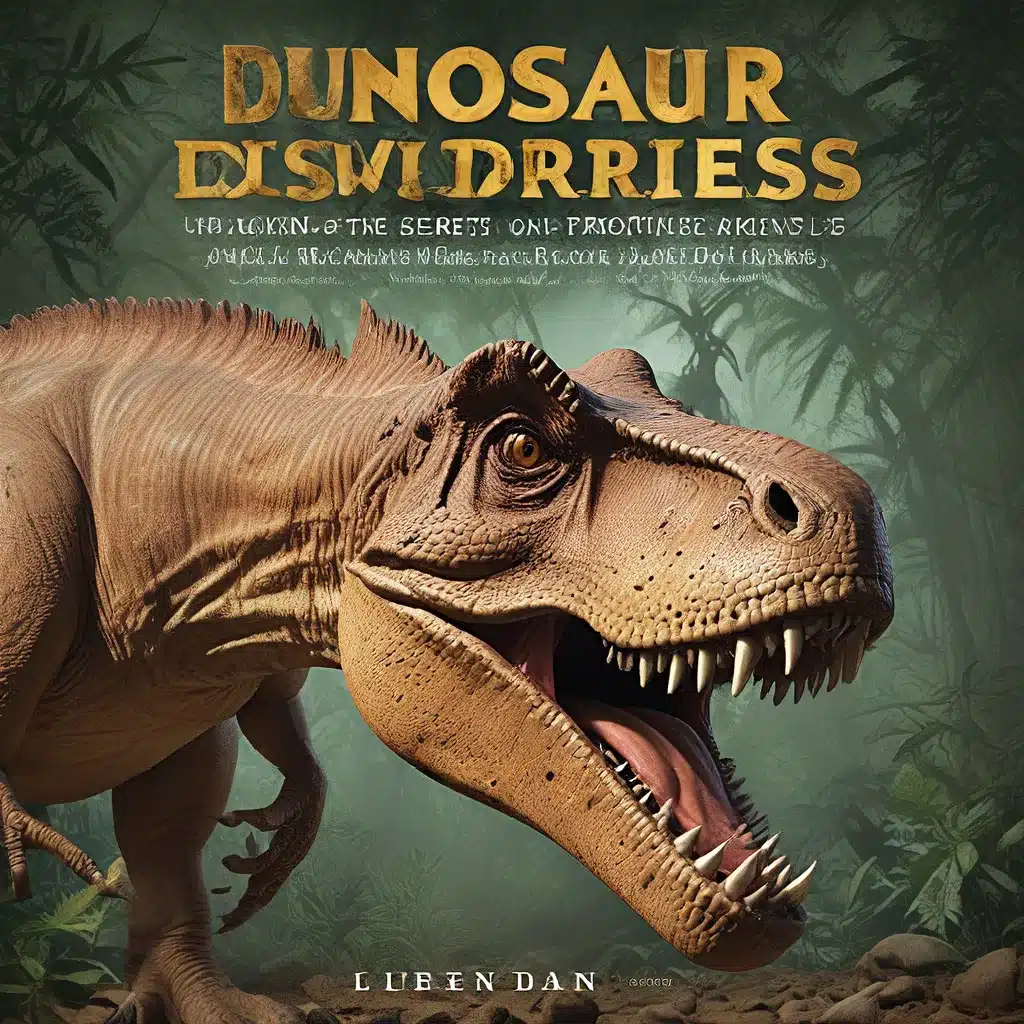
The world of dinosaurs has long captivated the imagination of people across the globe. From the towering sauropods to the fearsome predators, these ancient creatures have left an indelible mark on our understanding of life on Earth. In recent years, a flurry of remarkable archaeological discoveries has shed new light on the mysteries of the prehistoric world, offering us a glimpse into the lives and environments of these remarkable beings.
The Enduring Legacy of the Chinle Formation
One of the most fascinating geological formations in the world is the Chinle Formation, located in Colorado. This ancient landscape, dating back 203 million years, paints a vivid picture of a time when the region was a vibrant ecosystem teeming with life. The fossilized footprints of dinosaurs and the remains of ancient amphibians and crocodile-like creatures provide a tangible connection to a world that has long since vanished.
As the eons passed, the region underwent profound changes, leaving behind a rich tapestry of geological formations that tell the story of Earth’s evolution. The Wingate Formation, for instance, etches the memory of a desert landscape upon the earth, while the Kayenta Formation offers glimpses of oases amidst ancient dunes where life found refuge. The Morrison Formation, known for its diverse ecosystems, is especially notable for its famous dinosaur residents, such as the Stegosaurus and the Ceratosaurus.
The Dinosaur Freeway and the Secrets of the Mancos Formation
The Naturita Formation, aptly named the “Dinosaur Freeway,” holds an extensive gallery of tracks that offer a window into the vibrant life that once roamed these ancient shores. A 150-foot rock unit in this formation boasts some of the most tracks found in western North America, giving us a glimpse into the bustling activity of these prehistoric creatures.
Further exploration of the region’s geological history reveals the secrets of the Mancos Formation, which offers insights into a deep-sea realm where marine creatures thrived in quiet, submerged worlds. The Western Interior Seaway that once stretched throughout the valley is preserved in the dark grey and beige slopes along the Book Cliffs base, providing a glimpse into the diverse marine life that once inhabited these waters.
Uncovering the Mysteries of the Mesa Verde Group
As the Late Cretaceous Period drew to a close, the Mesa Verde Group marked the final chapter of the Age of the Dinosaurs. The sandstones and mudstones that form the tops of Mount Garfield and the Book Cliffs, reaching up to 200 feet in thickness, hold a wealth of fossilized remains, including dinosaur tracks, plants, crocodiles, mammals, turtles, and fish.
The Roan Cliffs, visible behind the Book Cliffs, were formed during the Green River Formation era, which was characterized by the presence of three freshwater lakes: Fossil Lake, Lake Uinta, and Lake Gosiute. The oil shale and limestone that make up these rock formations reveal a rich history preserved in the many fossils and tracks that have been discovered.
Immersive Experiences and Cutting-Edge Discoveries
For those eager to delve deeper into the world of dinosaurs and prehistoric life, the Dinosaur Journey Museum in Fruita, Colorado, offers captivating exhibits and immersive experiences. Visitors can also explore the fossil-rich landscapes of Dinosaur Hill and the Rabbit Valley Trail Through Time, where the echoes of ancient rivers and the whispers of bygone creatures linger in the landscape.
Beyond the local treasures, the global scientific community has been abuzz with a flurry of exciting dinosaur discoveries in recent years. From uncovering the last meal of a Tyrannosaurus rex to unlocking the secrets of a long-necked dinosaur with a truly remarkable neck length, these findings have provided invaluable insights into the lives and evolution of these ancient creatures.
Exploring the Fragility and Resilience of Life
One of the most intriguing aspects of the geological record is the evidence of mass extinctions that have shaped the course of life on Earth. The End-Triassic Mass Extinction, for instance, is etched into the rock of the Wingate Formation, serving as a poignant reminder of the fragility of life amidst the ever-changing landscape of our planet.
Despite these cataclysmic events, the story of life on Earth is one of resilience and adaptation. Researchers have discovered that truly giant members of the sauropod group evolved superlative size at least 36 times over the course of a hundred million years, highlighting the remarkable diversity and ingenuity of these ancient creatures.
As we continue to unravel the mysteries of the prehistoric world, the insights gleaned from these discoveries hold profound implications for our understanding of the present and the future. By exploring the extraordinary resilience and fragility of life, we are reminded of the delicate balance that sustains our own existence, and the importance of preserving the natural wonders that continue to captivate and inspire us.
The Lost Kingdoms invites you to embark on a journey through time, where the echoes of ancient footsteps and the whispers of forgotten creatures beckon us to uncover the secrets of the past. Join us as we delve deeper into the world of dinosaurs and unlock the enduring legacy of the prehistoric world.


